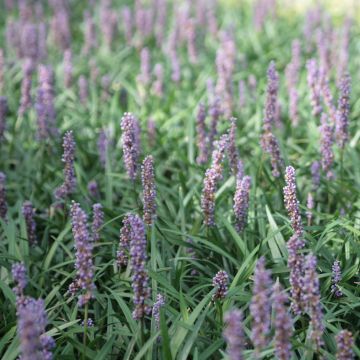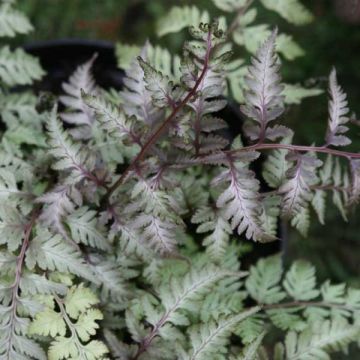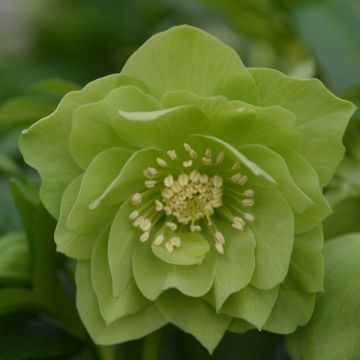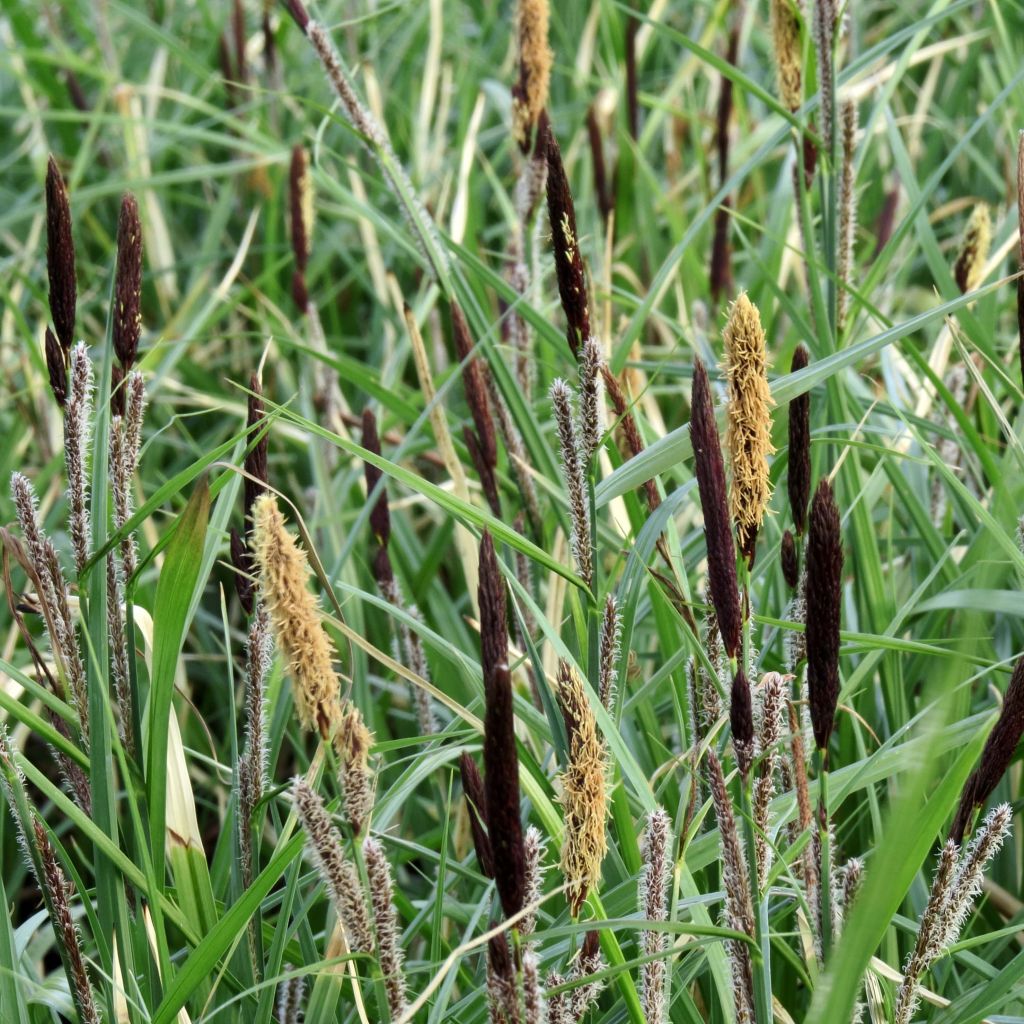

Carex acutiformis - Fausse laîche aigüe
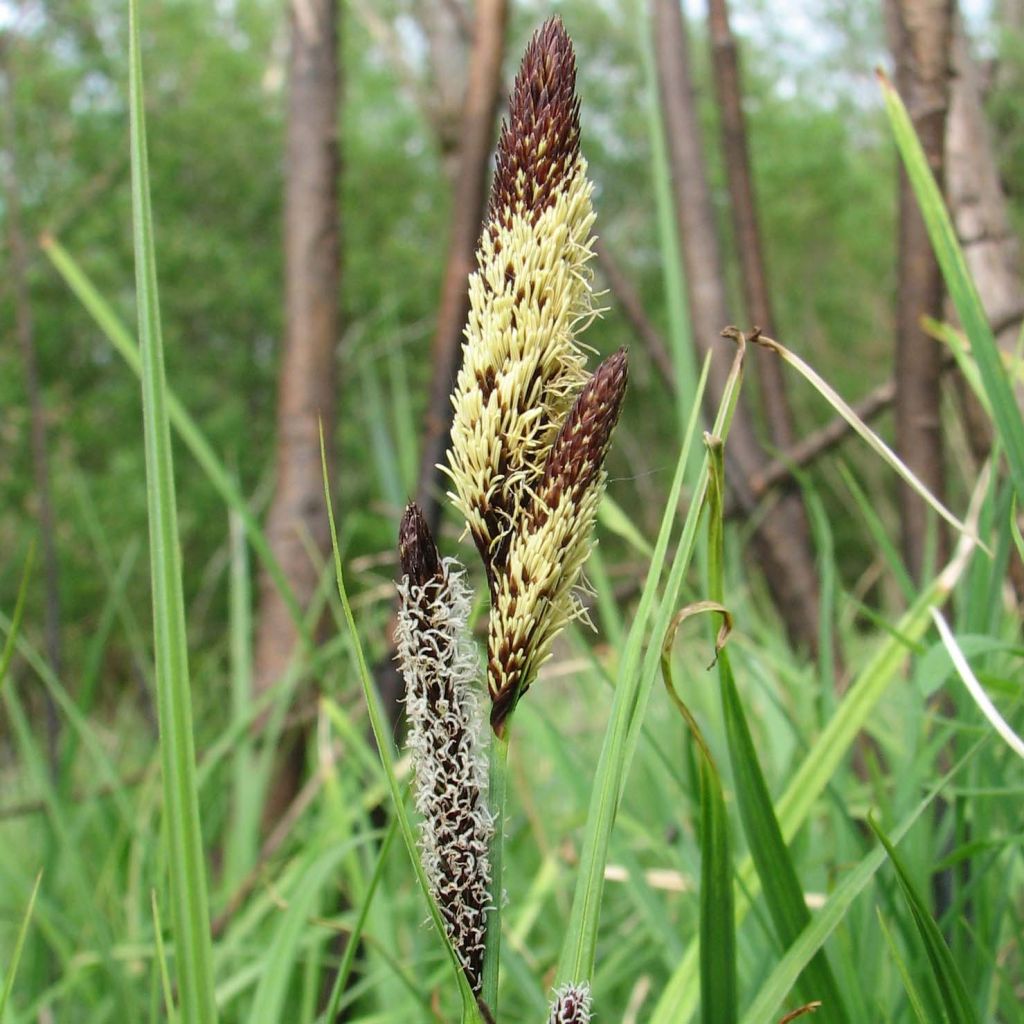

Carex acutiformis - Fausse laîche aigüe
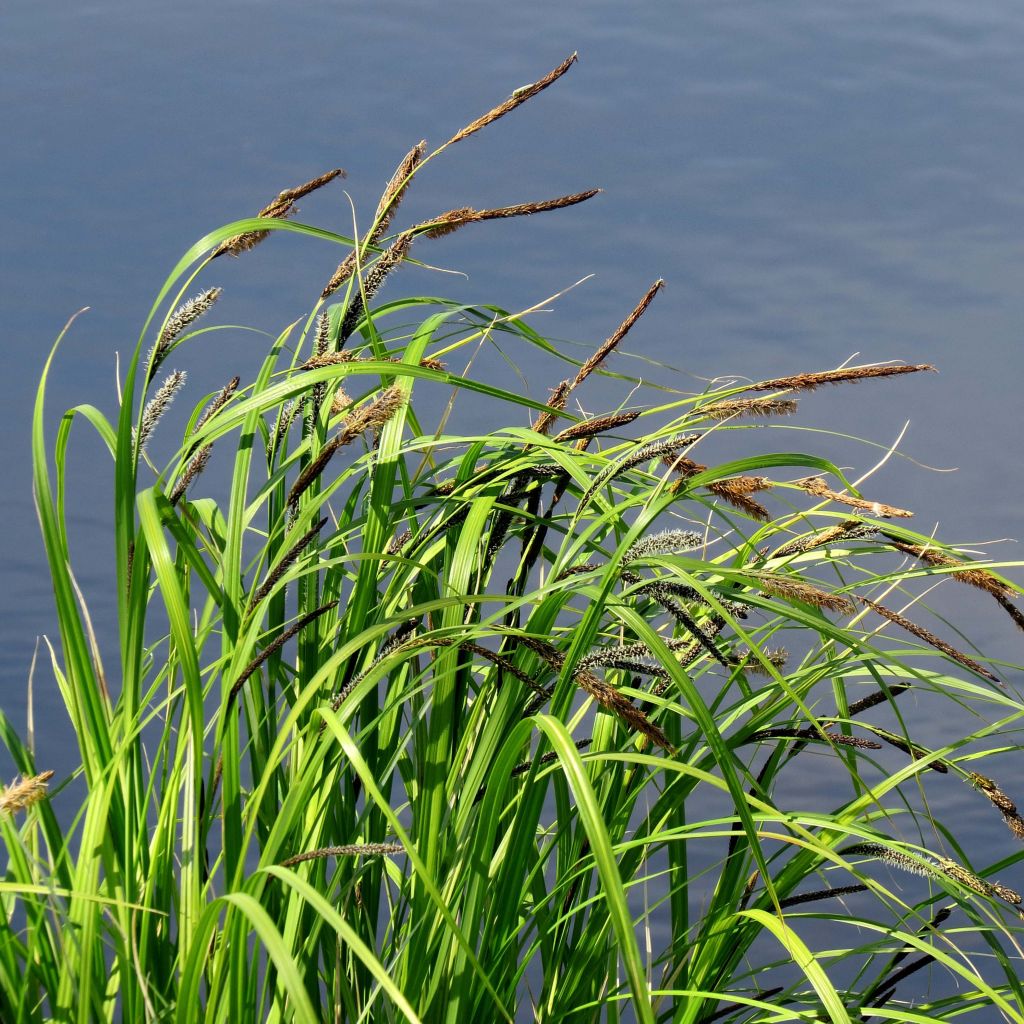

Carex acutiformis - Fausse laîche aigüe
Carex acutiformis
Carex acutiformis
Lesser pond Sedge
Special offer!
Receive a €20 voucher for any order over €90 (excluding delivery costs, credit notes, and plastic-free options)!
1- Add your favorite plants to your cart.
2- Once you have reached €90, confirm your order (you can even choose the delivery date!).
3- As soon as your order is shipped, you will receive an email containing your voucher code, valid for 3 months (90 days).
Your voucher is unique and can only be used once, for any order with a minimum value of €20, excluding delivery costs.
Can be combined with other current offers, non-divisible and non-refundable.
Home or relay delivery (depending on size and destination)
Schedule delivery date,
and select date in basket
This plant carries a 12 months recovery warranty
More information
We guarantee the quality of our plants for a full growing cycle, and will replace at our expense any plant that fails to recover under normal climatic and planting conditions.
Would this plant suit my garden?
Set up your Plantfit profile →
Description
Carex acutiformis, also known as the marsh sedge or lesser pond sedge, is a grass that is frequently found in wet environments, ditches, and marshes. This tall carex forms a beautiful clump of persistent, finely textured leaves in an intense green colour. It produces beautiful cylindrical flower spikes in a dark brown-black colour between May and July. This robust perennial with trailing rhizomes naturally thrives near ponds and water features, where it creates a stunning display alongside other waterside plants. Once established, it requires no maintenance.
Carex acutiformis belongs to the Cyperaceae family. Native to Eurasia, it is present almost everywhere in the world. This type of grass with trailing rhizomes forms an upright and arching clump, reaching a height of 1m (3ft) and a diameter of around 60cm (24in), expanding over time to form large colonies in moist to waterlogged soils. This species can even tolerate having its base submerged under 15cm (6in) of water. Its long, thin (4 to 8mm (1in) wide), linear, evergreen leaves are sheathing at the base, with tapering edges and a slightly drooping appearance. They have a vibrant and intense green colour, with older leaves drying out in winter to make way for new tender green leaves in spring. In April-May, depending on the climate, male or female flower spikes appear on the floral stems. The thick, cylindrical-elliptical, dark brown, male spikes emerge just above the foliage and are quite decorative. As a monoecious plant, like all carex species, it produces separate male and female flowers on the same individual.
This carex is suitable for all wet and sunny areas of the garden, including coastal regions. It can be used to stabilise banks. Alternatively, for a more decorative approach, plant it near a water feature or in an aquatic container on a patio. Combine it with flowering rush (Butomus umbellatus), Sweet Flag, ribbon grass (Phalaris), Cirsium rivulare, and many other waterside plants.
Report an error about the product description
Carex acutiformis in pictures
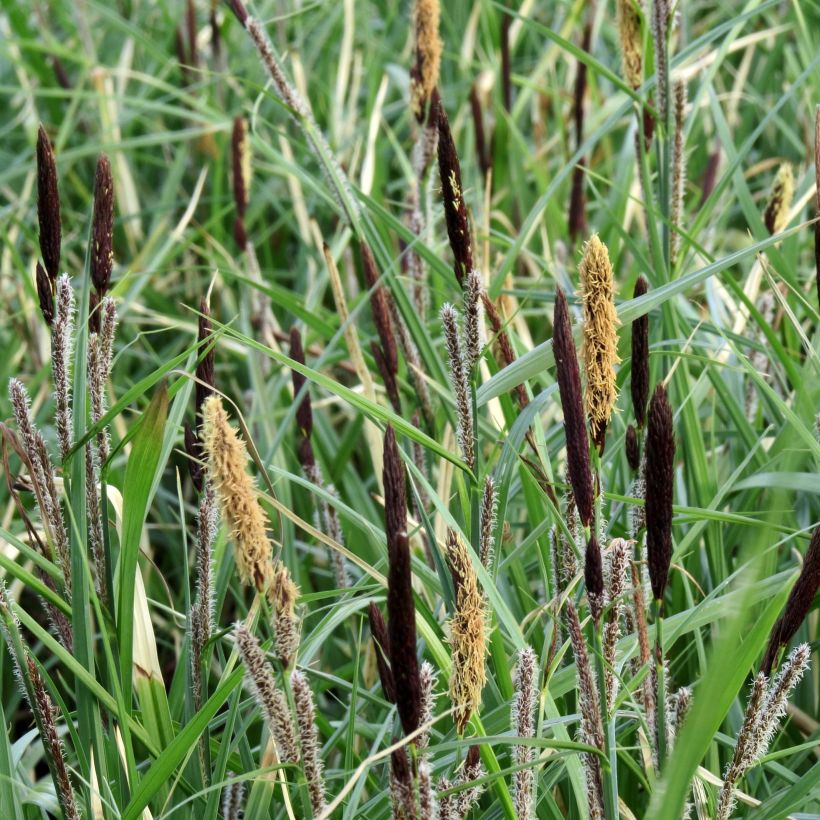

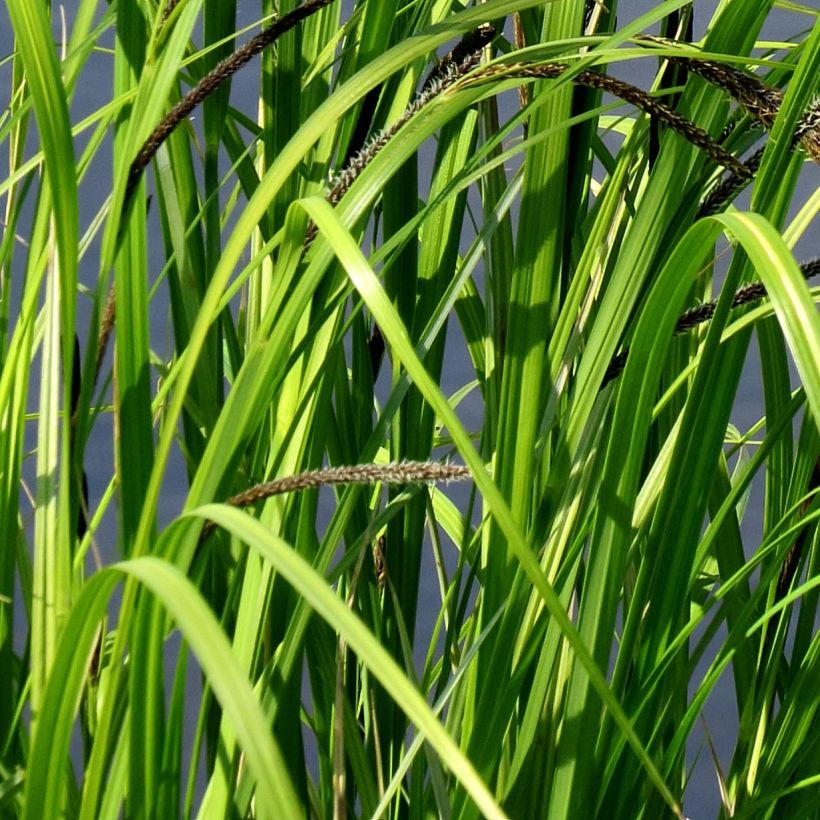

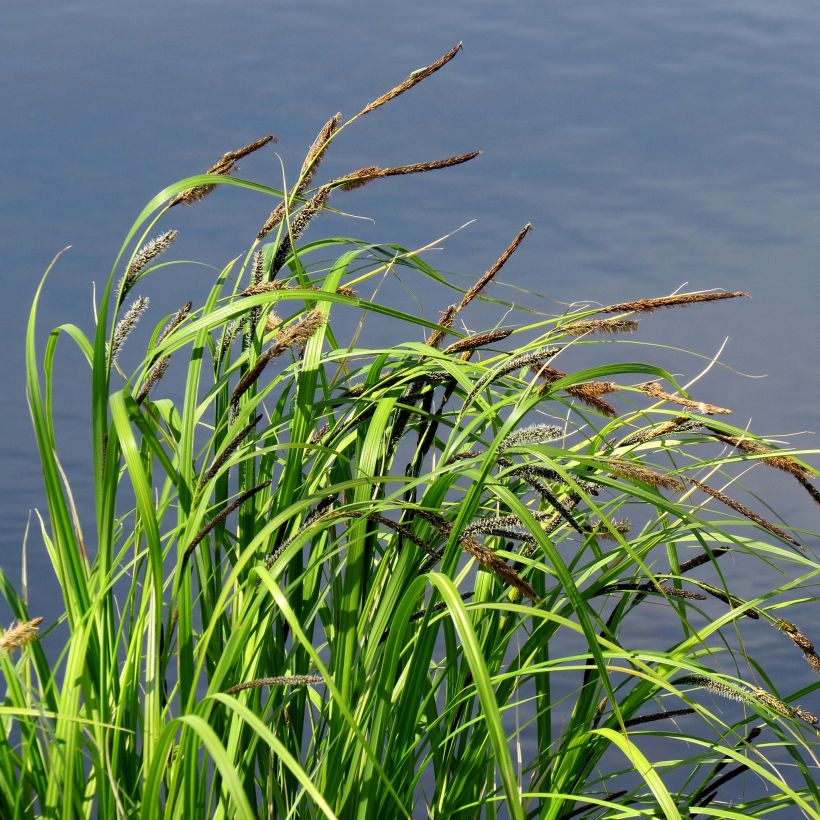

Flowering
Foliage
Plant habit
Botanical data
Carex
acutiformis
Cyperaceae
Lesser pond Sedge
Western Europe
Other Carex
View all →Planting and care
Carex acutiformis is an easy-to-grow plant in the sun, in any moist garden soil, even if clayey and heavy. It is capable of colonising places where it likes. Plant when all risk of frost has passed. Water abundantly when planting. Avoid heavy fertiliser applications. Remove damaged foliage during the growing season, but do not prune the clump. Remove the faded flowers if you want to prevent spontaneous sowing.
Planting period
Intended location
Care
This item has not been reviewed yet - be the first to leave a review about it.
Similar products
Haven't found what you were looking for?
Hardiness is the lowest winter temperature a plant can endure without suffering serious damage or even dying. However, hardiness is affected by location (a sheltered area, such as a patio), protection (winter cover) and soil type (hardiness is improved by well-drained soil).

Photo Sharing Terms & Conditions
In order to encourage gardeners to interact and share their experiences, Promesse de fleurs offers various media enabling content to be uploaded onto its Site - in particular via the ‘Photo sharing’ module.
The User agrees to refrain from:
- Posting any content that is illegal, prejudicial, insulting, racist, inciteful to hatred, revisionist, contrary to public decency, that infringes on privacy or on the privacy rights of third parties, in particular the publicity rights of persons and goods, intellectual property rights, or the right to privacy.
- Submitting content on behalf of a third party;
- Impersonate the identity of a third party and/or publish any personal information about a third party;
In general, the User undertakes to refrain from any unethical behaviour.
All Content (in particular text, comments, files, images, photos, videos, creative works, etc.), which may be subject to property or intellectual property rights, image or other private rights, shall remain the property of the User, subject to the limited rights granted by the terms of the licence granted by Promesse de fleurs as stated below. Users are at liberty to publish or not to publish such Content on the Site, notably via the ‘Photo Sharing’ facility, and accept that this Content shall be made public and freely accessible, notably on the Internet.
Users further acknowledge, undertake to have ,and guarantee that they hold all necessary rights and permissions to publish such material on the Site, in particular with regard to the legislation in force pertaining to any privacy, property, intellectual property, image, or contractual rights, or rights of any other nature. By publishing such Content on the Site, Users acknowledge accepting full liability as publishers of the Content within the meaning of the law, and grant Promesse de fleurs, free of charge, an inclusive, worldwide licence for the said Content for the entire duration of its publication, including all reproduction, representation, up/downloading, displaying, performing, transmission, and storage rights.
Users also grant permission for their name to be linked to the Content and accept that this link may not always be made available.
By engaging in posting material, Users consent to their Content becoming automatically accessible on the Internet, in particular on other sites and/or blogs and/or web pages of the Promesse de fleurs site, including in particular social pages and the Promesse de fleurs catalogue.
Users may secure the removal of entrusted content free of charge by issuing a simple request via our contact form.
The flowering period indicated on our website applies to countries and regions located in USDA zone 8 (France, the United Kingdom, Ireland, the Netherlands, etc.)
It will vary according to where you live:
- In zones 9 to 10 (Italy, Spain, Greece, etc.), flowering will occur about 2 to 4 weeks earlier.
- In zones 6 to 7 (Germany, Poland, Slovenia, and lower mountainous regions), flowering will be delayed by 2 to 3 weeks.
- In zone 5 (Central Europe, Scandinavia), blooming will be delayed by 3 to 5 weeks.
In temperate climates, pruning of spring-flowering shrubs (forsythia, spireas, etc.) should be done just after flowering.
Pruning of summer-flowering shrubs (Indian Lilac, Perovskia, etc.) can be done in winter or spring.
In cold regions as well as with frost-sensitive plants, avoid pruning too early when severe frosts may still occur.
The planting period indicated on our website applies to countries and regions located in USDA zone 8 (France, United Kingdom, Ireland, Netherlands).
It will vary according to where you live:
- In Mediterranean zones (Marseille, Madrid, Milan, etc.), autumn and winter are the best planting periods.
- In continental zones (Strasbourg, Munich, Vienna, etc.), delay planting by 2 to 3 weeks in spring and bring it forward by 2 to 4 weeks in autumn.
- In mountainous regions (the Alps, Pyrenees, Carpathians, etc.), it is best to plant in late spring (May-June) or late summer (August-September).
The harvesting period indicated on our website applies to countries and regions in USDA zone 8 (France, England, Ireland, the Netherlands).
In colder areas (Scandinavia, Poland, Austria...) fruit and vegetable harvests are likely to be delayed by 3-4 weeks.
In warmer areas (Italy, Spain, Greece, etc.), harvesting will probably take place earlier, depending on weather conditions.
The sowing periods indicated on our website apply to countries and regions within USDA Zone 8 (France, UK, Ireland, Netherlands).
In colder areas (Scandinavia, Poland, Austria...), delay any outdoor sowing by 3-4 weeks, or sow under glass.
In warmer climes (Italy, Spain, Greece, etc.), bring outdoor sowing forward by a few weeks.












































